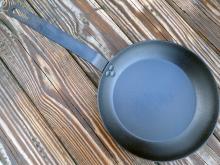 Today we’re reviewing our Lodge CRS10 carbon steel skillet we picked up a few weeks back.
Today we’re reviewing our Lodge CRS10 carbon steel skillet we picked up a few weeks back.
We’re big fans of cast iron cookware and wanted to try out this lodge carbon steel skillet and see how it performs, both indoors and outside, on the grill and fire pit.
So yes, there are other carbon steel skillets. Still, this Lodge skillet has the most customer ratings of all other Amazon offerings.
So we gave the Lodge 10-inch carbon steel skillet a good workout. Here is what we found …
Lodge CRS10 Carbon Steel Skillet
We picked up our Lodge carbon steel skillet on Amazon with free Amazon Prime shipping.
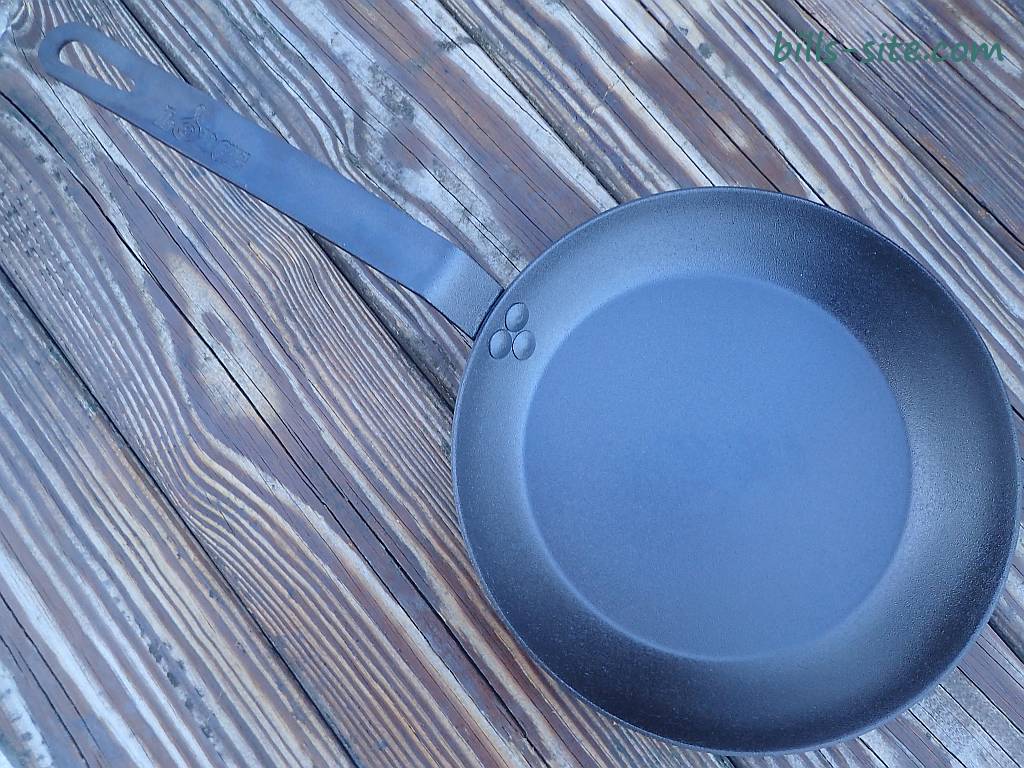
Lodge also has other carbon steel skillet sizes available, 8-inch, 12-inch, and the-15 inch, depending on your needs.
Check out the latest pricing, available sizes, and customer reviews here.
With well over 6000 Amazon customer reviews, this is evidence of a good product. Moreover, 86 percent of these reviews were 4- and 5-star ratings.
Our Lodge skillet arrived well-packed in bubble wrap. It was ordered Friday evening and arrived on my doorstep Sunday evening, just two days later.
What is a Carbon Steel Pan or Skillet
Carbon steel cookware is similar to cast iron, in that, it is mostly made of iron. Actually, a carbon steel skillet or pan is somewhere around 99% iron and 1% carbon. In comparison, cast iron contains around 3% carbon and the 97% iron.
Such a small difference in iron versus carbon? Both types of cookware have a lot in common. They are great to cook with, they’re both really durable, and they become more non-stick with time.
However, there are some key differences between cast iron and carbon steel:
carbon steel is lighter than cast iron
carbon steel heats up and cools down faster than cast iron
cast iron is slower to heat but has better heat retention
carbon steel typically has a smoother cooking surface than cast iron
you’re able to develop a durable, easy-release seasoning for both carbon steel and cast iron
Lodge CRS10 Carbon Steel Skillet Specifications
These are my own out-of-the-shipping-box specifications measured on the day of unwrapping:
made from heavy-duty 12-gauge carbon steel
total weight, 3 pounds, 2 1/4 ounces, 1426 grams
width of outside edge to the outside edge of the skillet: 10 inches, 25.5 centimeters
bottom edge to bottom edge width, the actual cooking surface: 7 1/2 inches, 19 centimeters
skillet height, 1 1/2 inches, 3.8 centimeters
overall height of skillet including the handle, 3 1/8 inches, 8 centimeters
overall length, handle to skillet edge: 19 inches, 48.3 centimeters
handle width 1 1/8 inches, 3 centimeters
the handle is attached to the skillet with three steel rivets
the handle has a loop for hanging
factory seasoned with vegetable oil
made in USA
How to Season the Lodge Carbon Steel Skillet
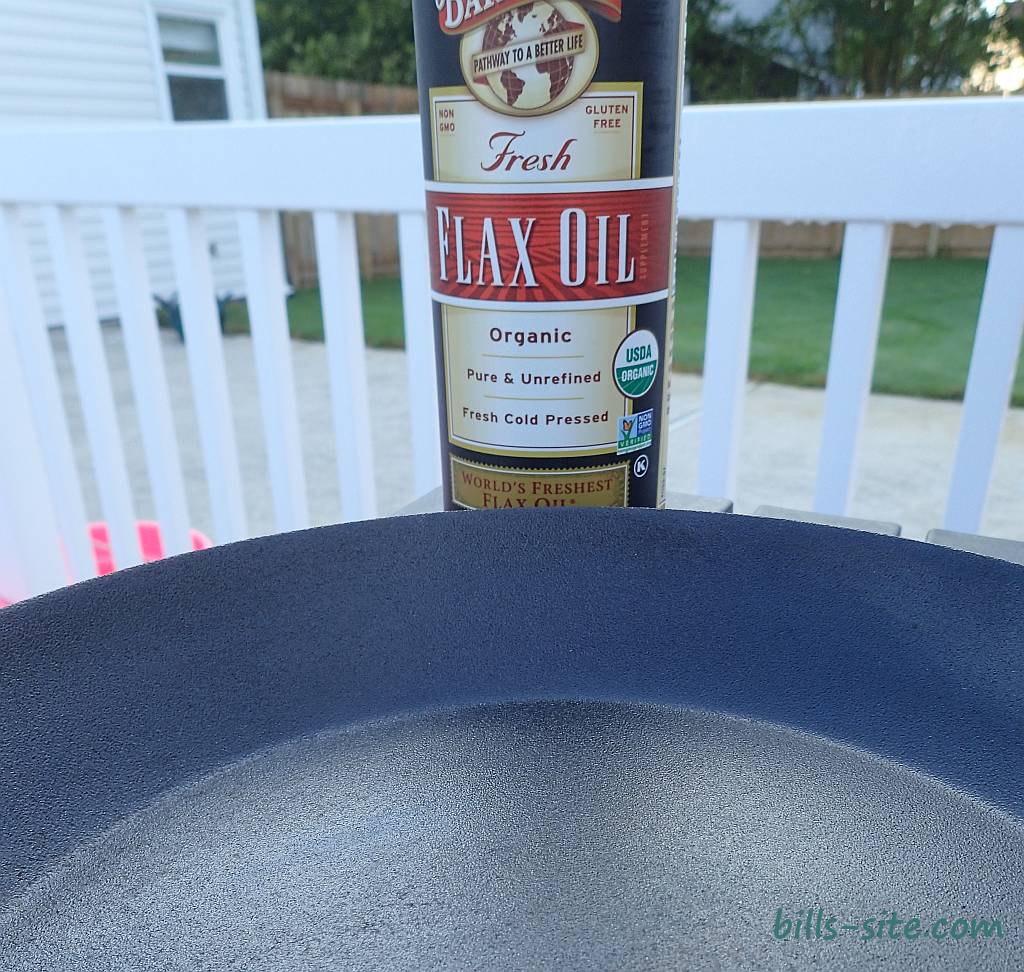
If you’re a long-time cast-iron fan like we are, you know there is some preparation before using any new cookware piece, seasoned or not.
Non-stick easy release seasoning is built up in thin layers over time with each use. However, it doesn’t take long to see results. But those results get better and better with each use of the Lodge carbon steel skillet. Your patience will be rewarded.
What is Carbon Steel Seasoning?
Seasoning is a layer of oil that has been baked at high temperatures onto your carbon steel pan or skillet. The oil changes from a liquid to a hard surface that bonds to the metal through polymerization. The oil must be heated past its smoke point to achieve polymerization.
Cooking oils we use and their smoke point:
unrefined coconut oil: 350 °F / 177 °C
lard: 374 °F / 190 °C
tallow: 480 °F / 250 °C
unrefined flaxseed oil: 225 °F / 107 °C
The seasoning we create helps to protect the carbon steel from rusting.
We use unrefined 100% flaxseed oil for day-to-day use in wiping down and maintaining carbon steel and cast iron cookware after each use.
Step 1, Clean Your Skillet
First, we gave our new out-of-the-box Lodge 10-inch carbon steel skillet a good wash with warm soapy water to remove any remaining manufacturing residue or oils.
It’s okay to use soapy water since we are going to season our skillet.
Finally, rinse and dry. We use our handy barbecue towels for this task, read about them here. These won’t show any discoloration and you won’t ruin the good stuff.
Step 2, Oil Your Skillet
We have been using coconut oil in our cast-iron cookware seasoning regimen. We’re big fans of coconut oil in everyday cooking. But use the cooking oil you have on hand. Just know the smoke point.
Use your fingers to rub in a small amount of your preferred cooking oil. Unrefined coconut oil will melt as you use your fingers to rub in and coat the top, bottom, sides, and handle of the skillet. Work it into every corner and edge.
Lastly, wipe it down with a barbecue towel or something similar to remove any excess cooking oil.
Step 3, Bake for About an Hour
We’re firing up our Kamado Joe grill for this carbon steel skillet seasoning task. We’re targeting a stabilized grill temperate of 450 °F, 232 °C, as measured the grill dome thermometer.
We use the outdoor grill for all our cast-iron seasoning and re-seasoning. Mostly to keep the cooking oil smoke outdoors and away from the house.
Our Lodge 10-inch carbon steel skillet fits nicely inside the Kamado Joe Classic with the grill grate in the lowest position.
After lighting off the charcoal fire starter and waiting about 10 minutes, we placed the coconut-oiled Lodge carbon steel skillet on the grill grate, so it will heat gradually and evenly.
Then, we’ll let the skillet bake for an hour or so at the target temperature.
Finally, after our hour-long seasoning session at 450 °F, 232 °C, shut down the grill vents for an all-natural cool-down cycle.
It’ll take at least 4 or 5 hours to cool down before the carbon steel skillet is ready to handle in our well-insulated grill. So, we just let ours cool all night and grab it from the cold grill the next day.
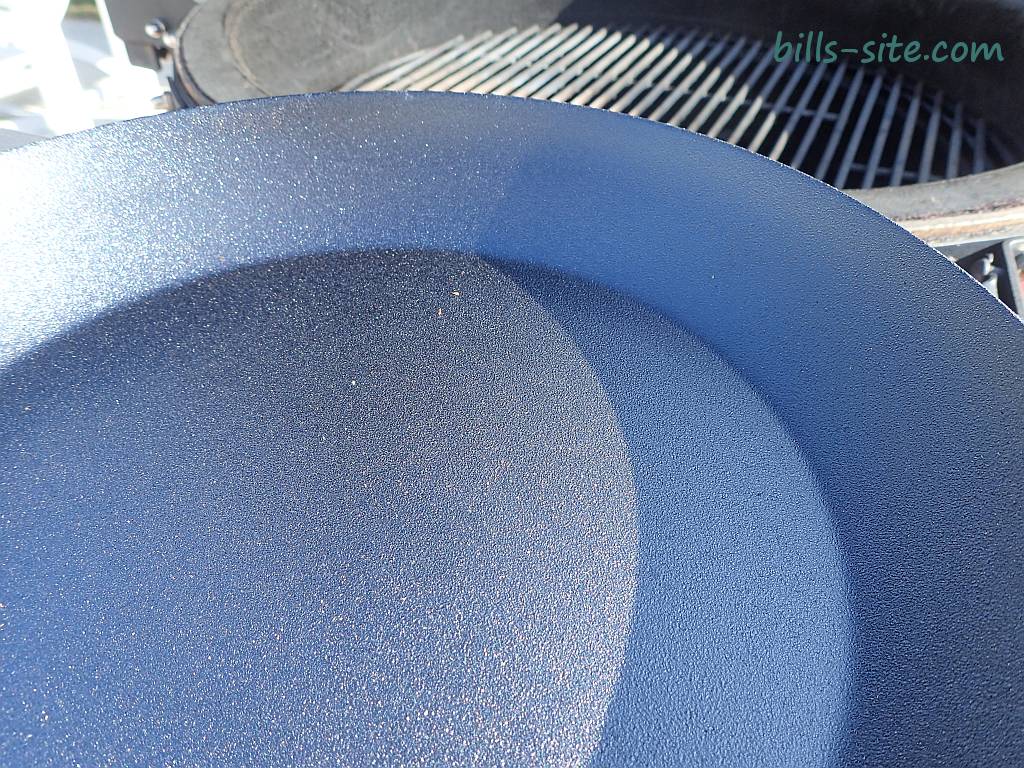
Carbon Steel Skillet – The First Use
We decided to make a sausage, egg, and cheese muffin for the first-time use of our Lodge 10-inch carbon steel skillet.
There was a slight bit of sticking of the sausage patty and the eggs. Not much at all.
However, after several more sessions, we got the non-stick results we wanted. There was less of the slight sticking and more easy release with continued use. Especially when making the egg portion of the sausage, egg, and cheese muffin.
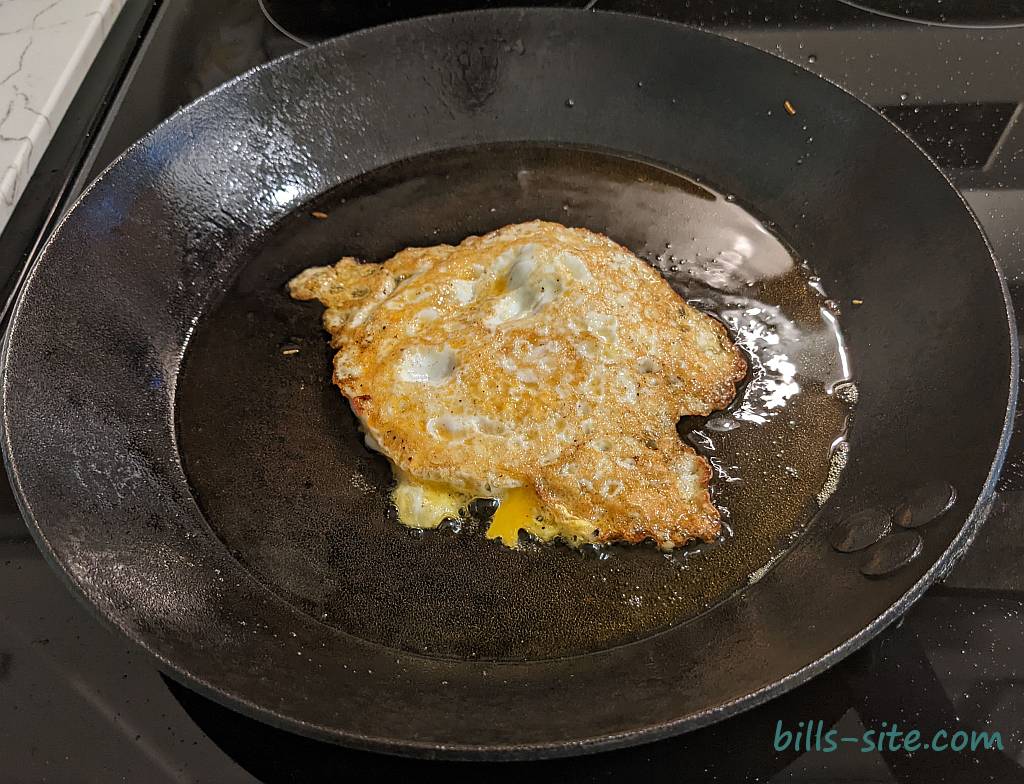
Lastly, seasoning continues to build up over time, layer by layer. After each use, we’ll wipe down our carbon steel with flaxseed oil.
What I Like About This Lodge Carbon Steel Skillet
it heats up fast
the handle remains cool even though the carbon steel skillet is hot
came pre-seasoned, and it gets better with everyday use, easy clean up
has not warp like my wife’s Teflon non-stick skillet
tolerates higher heat, unlike my wife’s Teflon non-stick
I can use it on the grill, smoker, stovetop, or oven
lastly, the price is right
After a month of near daily use, both inside on the stovetop and outside on the grill top, it has performed flawlessly. We have achieved the non-stick, easy-release seasoning.
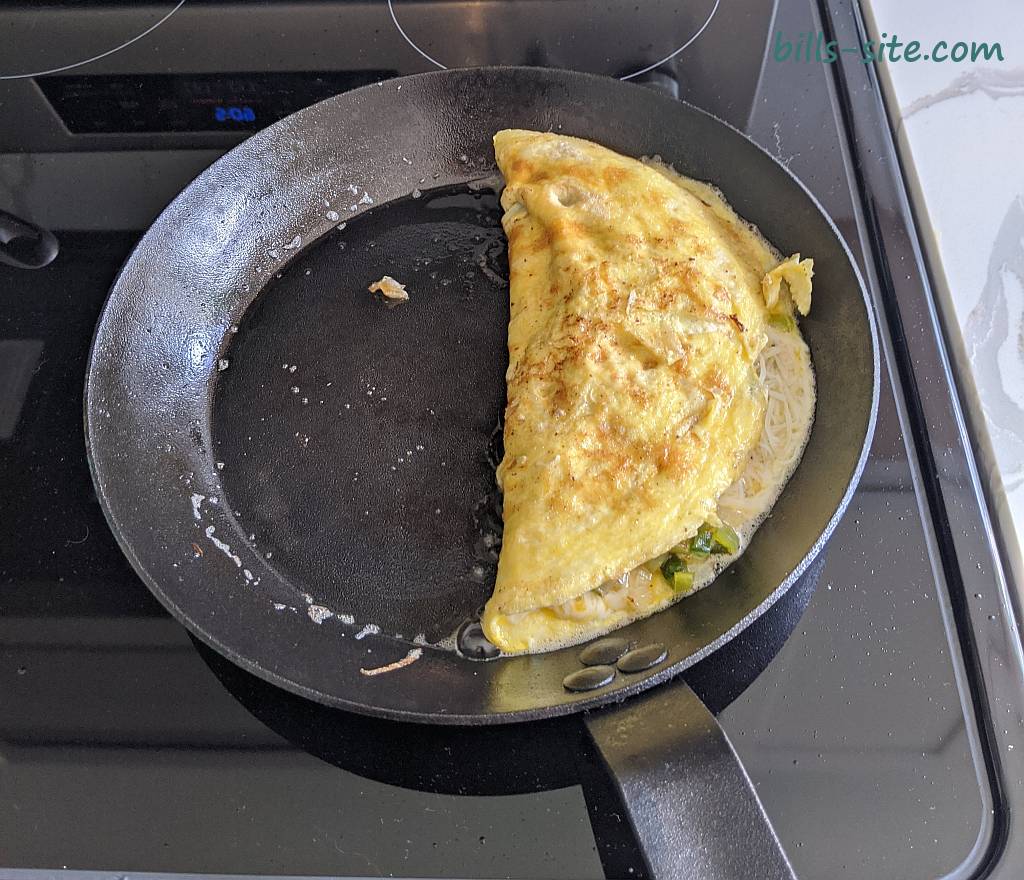
What I Don’t Like About This Lodge Carbon Steel Skillet
So far, nothing comes to mind other than I now want to have one in each available size.
I don’t know why I waited so long to get a Lodge carbon steel skillet.
Tips for using the Lodge Carbon Steel Skillet
Use a liberal amount of cooking fat, especially when breaking in a new piece of cast-iron or carbon steel. Don’t be shy about using the cooking fat.
A sticky or tacky finish means you have been using too much oil for seasoning and storage. It’s time to clean and re-season your cookware.
Try not to use soapy water on your seasoned cookware. Soap will eat away at that seasoning you’re working hard to maintain.
Use your carbon steel skillets daily. They get better with time and after each use.
Carbon Steel Skillet Accessories
Here is what we use in our day-to-day care and maintenance of our cast iron and carbon steel pans and skillets.
For Daily Care of Carbon Steel Pans and Skillets
Use unrefined flaxseed oil for day-to-day care and maintenance. After washing and drying, we’ll use a drop or two of unrefined flaxseed oil to protect the carbon steel metal and enhance the seasoning.
If you can’t find anything locally, try this flaxseed oil. It has over 7000 of mostly 4- and 5-star Amazon customer reviews.
A little flaxseed oil goes a long way. All you need is a drop or two. Once the bottle is opened, keep it in the refrigerator to stay fresh. One bottle will likely last you many months of daily use on a 10 inch carbon steel skillet.
Use unrefined coconut oil for periodic re-seasoning. Unrefined virgin coconut oil is getting easier to find in local stores. We use it in some of our day-to-day cooking needs and the occasional seasoning and re-seasoning tasks.
But if you don’t find it locally, we like this one. It has well over 22,000 of mostly 4- and 5-star Amazon customer reviews.
For Cleaning your Carbon Steel Pans and Skillets
Carbon steel pan and skillet cleaner: this chain mail scrubber has held up great, easily cleaning off anything that doesn’t easily give it up and wipe off from the pan or skillet.
This high-quality chain mail cleaner has over 15,000 of mostly 4- and 5-star Amazon customer reviews.
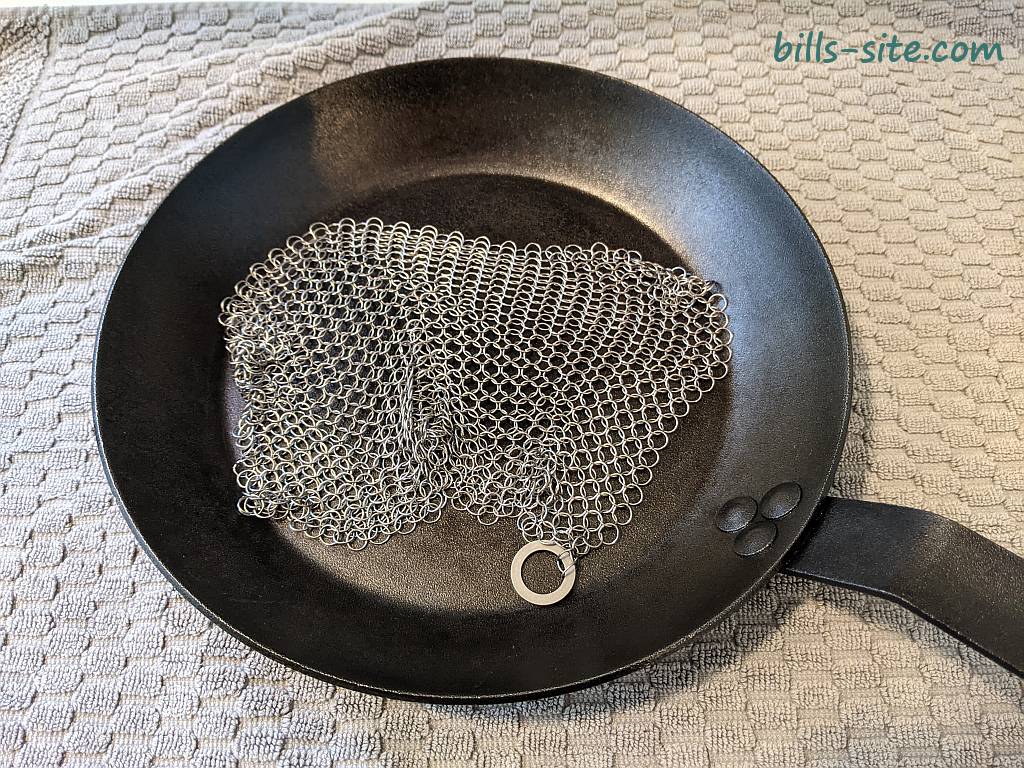
We now use this product on our cookware and no longer use those one-time-use steel wool soap pads that always seem to rust.
This even works great for cleaning Pyrex and other glass cookware.
Check out my other Kamado Joe and JoeTisserie recipes and links here on my Outdoor Eats page.
